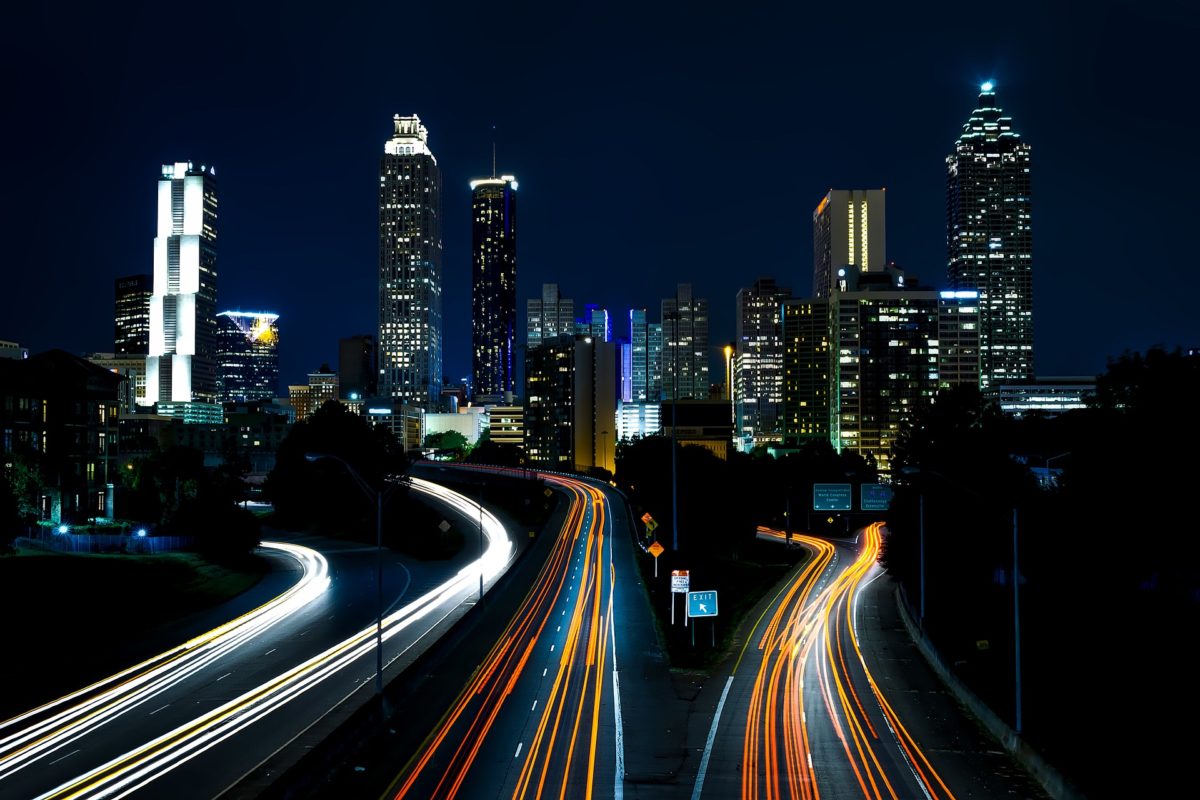
03 Apr The Triangle Tragedy: What is the Heroin Triangle in Georgia?
Table of Content
Since the early 90’s, the American government, law enforcement, and the CDC have been waging a pyrrhic war on drugs and their dissemination to the public at large. While this may have been implemented with the best of intentions, it has not yielded positive results, nor has it done much of anything to curb or deter the flow of narcotics into the country. It makes sense, with a country as large as America, preventing drug imports is a monumental task. With thousands of miles of unmonitored coastline or country on all four sides, our borders are like a leaky sieve; no matter how many holes we plug, more seepage will inevitably spring up.
To make matters worse drug cartels have learned how to be creative in their methods of shipping, importing and distributing their products. Couple human ingenuity with an ever-present demand for their products by American citizens and you find yourself in this quagmire.
One issue that increasingly demands more and more attention is the opioid epidemic sweeping throughout the country. This public health crisis is a menace to the lives and well-being of Americans in every city in every state in the Union. Due to a variety of factors, deaths resulting from opioid abuse and overdose have increased by 400% with an estimated 55,000 Americans dying of complications on an annual basis.
Georgia has not escaped this epidemic, nor has its citizenry remain unscathed, regardless of socioeconomic status. Ranked 9th worst in the nation when it comes to opioid overdoses per year, the CDC estimates that 1,500 Georgians will die of an opioid overdose. Of those overdose deaths, it is expected that at least 10% of the casualties will result from a heroin overdose. Sadly, the unspoken truth is that Georgians are dying from heroin overdoses almost every day.
While the heroin epidemic in Georgia is happening throughout the state in just about every county, in the last decade, a rash of heroin overdoses has occurred in what has been dubbed by the Georgian press as Atlanta’s heroin triangle. In this article, we will discuss this tragedy, breakdown heroin addiction within the triangle and mull over possible solutions proposed by experts.
The Atlanta Heroin Triangle
As you can imagine, this outbreak of heroin overdoses has occurred in proximity to Atlanta, but what might surprise some is that this spate of overdoses has not predominantly happened in low-income neighborhoods, rather, it comprises suburban, mostly upper-middle-class Jewish neighborhoods. The area begins in northern Atlanta, runs northwest past Marietta, east through Alpharetta, Johns Creek and Duluth and then southwest through Dunwoody and Sandy Springs. The central counties wherein this takes place include Cobb, Gwinnett, Fulton, and DeKalb counties.
In an explosive 11 Alive investigative expose, reporter Jeremy Campbell revealed the sheer numbers of devastation and tragedy occurring in these communities. Campbell discovered that from 2010 to 2016 there was a 4,000% spike in heroin-related deaths in young people, aged fifteen to thirty-five. While these areas include a variety of ethnicities and socioeconomic strata, this has been, surprisingly, a predominant issue within the Jewish community centered in these counties, with Fulton County alone experiencing 150 heroin overdose deaths last year.
To shed light on this growing crisis, A&E series, Intervention, will be a character focus on five opioid addicts. Another show called the Heroin Triangle began airing in January to further emphasize and study this issue.
Why it Occurs
There are no clear answers for why there is such a concentrated smattering of overdoses, but there are several possible explanations or factors that tie into the dilemma.
Georgia Pill Mills
Overprescribing pain medications such as oxycodone, hydrocodone and the like is an issue seen all over the country. Since the early 2000s massive pushes by big pharma companies have helped shape the way we treat and diagnose pain, leading to an overflow of pain prescriptions. In Georgia alone, an estimated 8 million scripts were written last year, and this number has increased steadily every single year. This painkiller surplus has lead to a noticeable excess of pills, which, as one would expect, leads to illegal sharing of the pills.
According to polling of Georgian’s who knew someone that had died of an overdose, one in two of those people had taken a painkiller that was not prescribed initially to them. Surprisingly, nearly 70% of respondents had family members or friends offer a painkiller that was not prescribed to them. A reason for this rampant drug-sharing might be leftover pills. According to the Journal of American Medical Association, 66% of patients have leftover pain pills in their homes. For teenagers, this means that there are drugs easily accessible for times when they are either in pain or just want to take drugs recreationally.
In the case of heroin abuse, nearly 90% of all heroin users begin with prescription pills. Often this genesis may be completely innocent. They get hurt, a shoulder injury, a doctor prescribes them pills. They take the pills, and the painkillers make them feel better. They not only mask the pain but give them a euphoric or peaceful feeling. Maybe they get hooked on this feeling. Before they know it, their script is through and the doctor will not prescribe more. So, what do they do? They raid friends or families medicine cabinets. They begin buying pills from drug dealers.
Now, on the black market, pain pills cost an exorbitant price, sometimes up to $30 for a single pill. As any user knows, you need multiple pills, especially as you grow dependent on the drug and your tolerance increases. Before you know it, you are spending a couple hundred dollars a day on illegal pills.
Eventually, many reach a point where the drugs are too expensive, and the high is no longer strong enough. So, as is the case in every economy, when a product becomes more expensive than its worth, customers turn to alternatives, to substitute products. In the case of opioids, Heroin is the substitute, a cheaper and unbelievably more powerful substitute. Very very few people go out searching for heroin. Instead, they find it through the avenues of their current painkiller addiction.
The Jewish Community Factor
Small religious communities can be both forces for good and unintentional bad. While they are bound together by a shared set of communal values, beliefs, and family structures, this can lead to heavy pressure to maintain a solid front, to conform, to not stick out. Any type of sin is taboo, but there are certain sins that are even more so. This can often result in families who keep their skeletons locked away in their closets and hold their secrets or shames close to the chest.
We as humans would like to give off the appearance that we are in control; that everything is okay in our lives, that our businesses and marriages are successful and that our children are turning into incredible young adults filled with vigor and ambition. However, we do not want to reveal to the world our pains, our insecurities, flaws, disfigurements or shame.
There are a variety of generalizations that are often made about drug addicts: they are lazy, they are losers, they are criminals, they are a product of poor parenting or lose morality, and in this case, maybe they are not good Jews. While this may be true for some, the vast majority of substance abusers are regular people who were seduced or innocently fell into the trap of addiction and substance abuse.
Within the Triangle, we see an outbreak of high school Jewish teenagers overdosing on heroin and these teens are what most people would consider “good kids.” They perform well in school, they attended temple and completed their Bar Mitzvahs or Ba Mitzvahs. They appeared to have everything together in their lives except for one little thing, one creeping addiction that most families choose to sweep under the rug. This stigma, coupled with the inevitable feeling of shame associated with substance abuse keeps teenagers and their parents from addressing their substance abuse.
According to Andrea Rayburn, a representative from Lakeview Health Detox Clinic, the clinic that receives most of these substance abusers, “Southern families tend to sweep problems under the rug. They like to deny that addiction can happen to their own family. If it does, they try not to talk about it. It’s a mistake for patients or their family members not to be honest with doctors because that way it takes medical professionals longer to uncover the real problem. Too many people wait until the addiction has turned into a crisis, and then they end up in psychiatric units instead of addiction treatment facilities. They are not getting the right treatment in those clinics. Most of them are circling in and out of detox units and psychiatric hospitals instead of getting effective addiction treatment.” Denial, especially of addiction, is an awful thing for the health and safety of teenagers especially in the case of opioids since the sooner you cut off abuse, the better chance you have of recovering.
Pressure and stress placed on students by their families and these communities, especially the pressure to perform in school, social lives and sports may also be a contributing factor. Many of the kids overdosing on heroin within the Triangle are hardworking and competitive kids. This need to keep up appearances and to excel could very well play a role. Rayburn states, “We see a lot of high school kids overdosing on opiates in the Triangle area, People in that area are very competitive and hard working. There is a lot of pressure to keep up appearances and a lot of pressure on school kids to get good grades, so they qualify for certain scholarships.”
Stress is a well-known factor that increases the risk for addiction, with many substance abusers turning to drugs or alcohol in times of high stress. So, when young people get stressed and begin to self-medicate, they hide their issues from their parents, who in turn hide their issues from the wider community. One of the most important aspects of a successful recovery from drug abuse requires being open and honest about cravings, slip-ups, or low points in your life. Addiction flourishes in the dark and withers in the light, but unfortunately; many find themselves unwilling to reveal their personal shame to the light.
What Can be Done About the Triangle Tragedy?
Several Jewish mothers of children who died of heroin overdose have recently started a campaign to bring this conversation to the forefront. They aim to show that their kids were good people who made poor decisions and that everyone and every family is susceptible to the siren’s song of opioid addiction. By having conversations and thorough discussions, they hope to save other mothers and fathers the grief that they themselves experienced because they either did not know about what their child was dealing with or did not address it soon enough.
They emphasize that these types of dialogues need to be had, especially in religious communities where the purpose of churches and synagogues are to support and aid both the healthy and the sick, the devout and the wanderers. By seeking to eliminate the stigma of talking about issues associated with substance abuse, families can take the proper steps to combat or prevent addiction in their teenagers.
Substance abuse education is also essential, for both students and parents. Understanding addiction and the consequences of drug or alcohol abuse create a healthy fear that should at the very least pose as some obstacle against the curious drug first timers.
If you or someone you know struggles with heroin or opioid addiction, immediately seek medical assistance. Do not wait until an overdose or a hospital trip to research or enroll in an inpatient or outpatient detox center. Many people avoid seeking heroin detox and addiction treatment until they reach an absolute breaking point or it is too late altogether. The Triangle Tragedy is representative of a national conversation that needs to be had about the dangers of opioid addiction. While measures have been put forth to battle this crisis, the exponentially rising death rates illustrate that more needs to be done. If you or a loved one lives in the Georgia Drug Triangle and is struggling with substance abuse or drug addiction, please reach out and seek treatment to get your life back on track. We are here to help.
Sources:
“What Is “The Triangle”?” USA Today. 27 Feb. 2016. 7 Mar. 2019. https://eu.usatoday.com/story/news/2016/02/25/what-triangle/80775882/
Rass, Michael. “The Heroin Epidemic in Georgia’s Triangle.” Lakeview Health. 29 Sep. 2017. 7 Mar. 2019. https://www.lakeviewhealth.com/blog/heroin-in-georgia/
“Trapped in Atlanta’s Heroin Triangle.” Atlanta Jewish Times. http://72afe85966580f8b2ff7-ab5cc089760ec1125a5e1e2ae917a942.r22.cf2.rackcdn.com/1705884108589e00f4047dd_0.pdf






No Comments